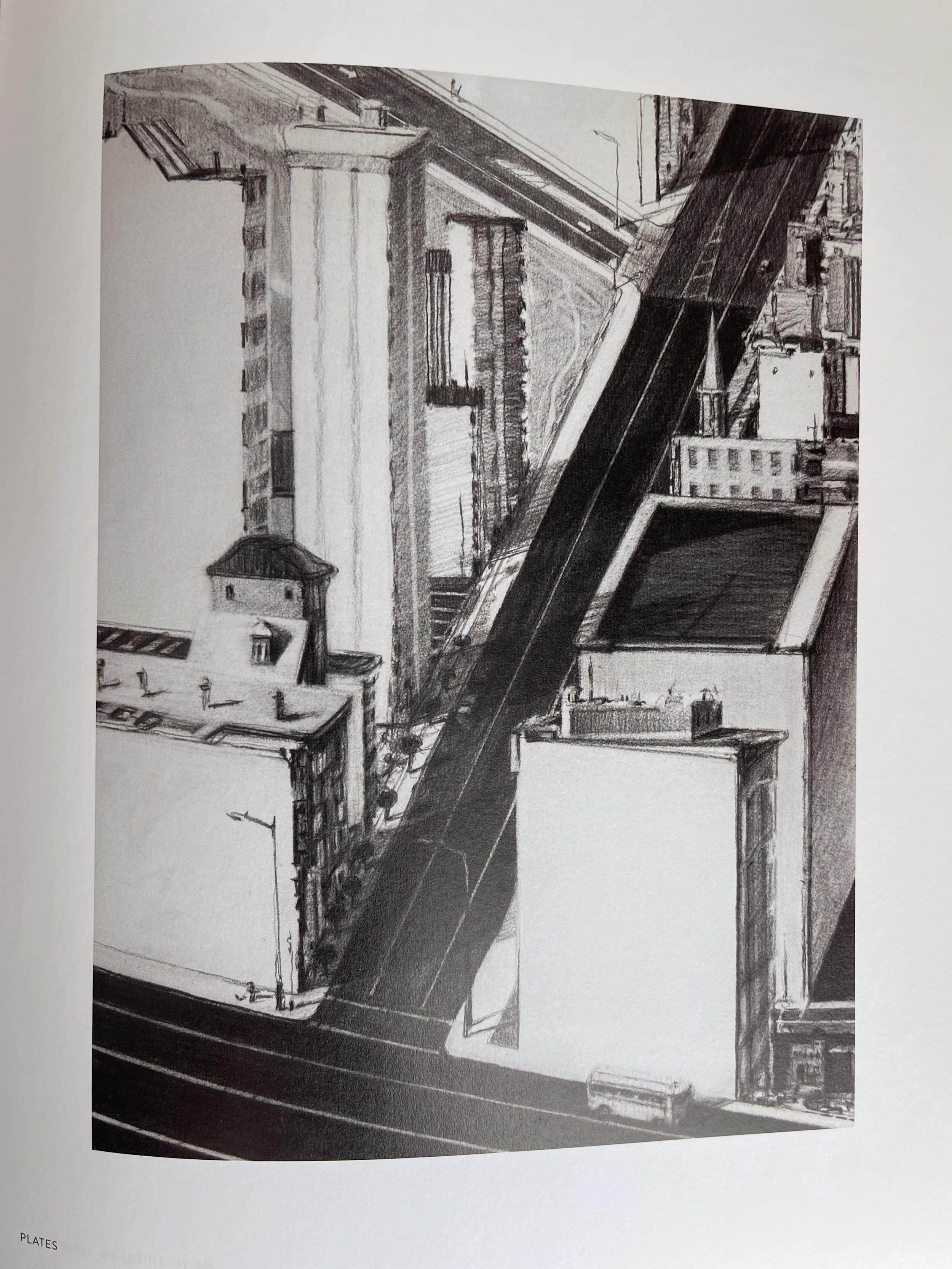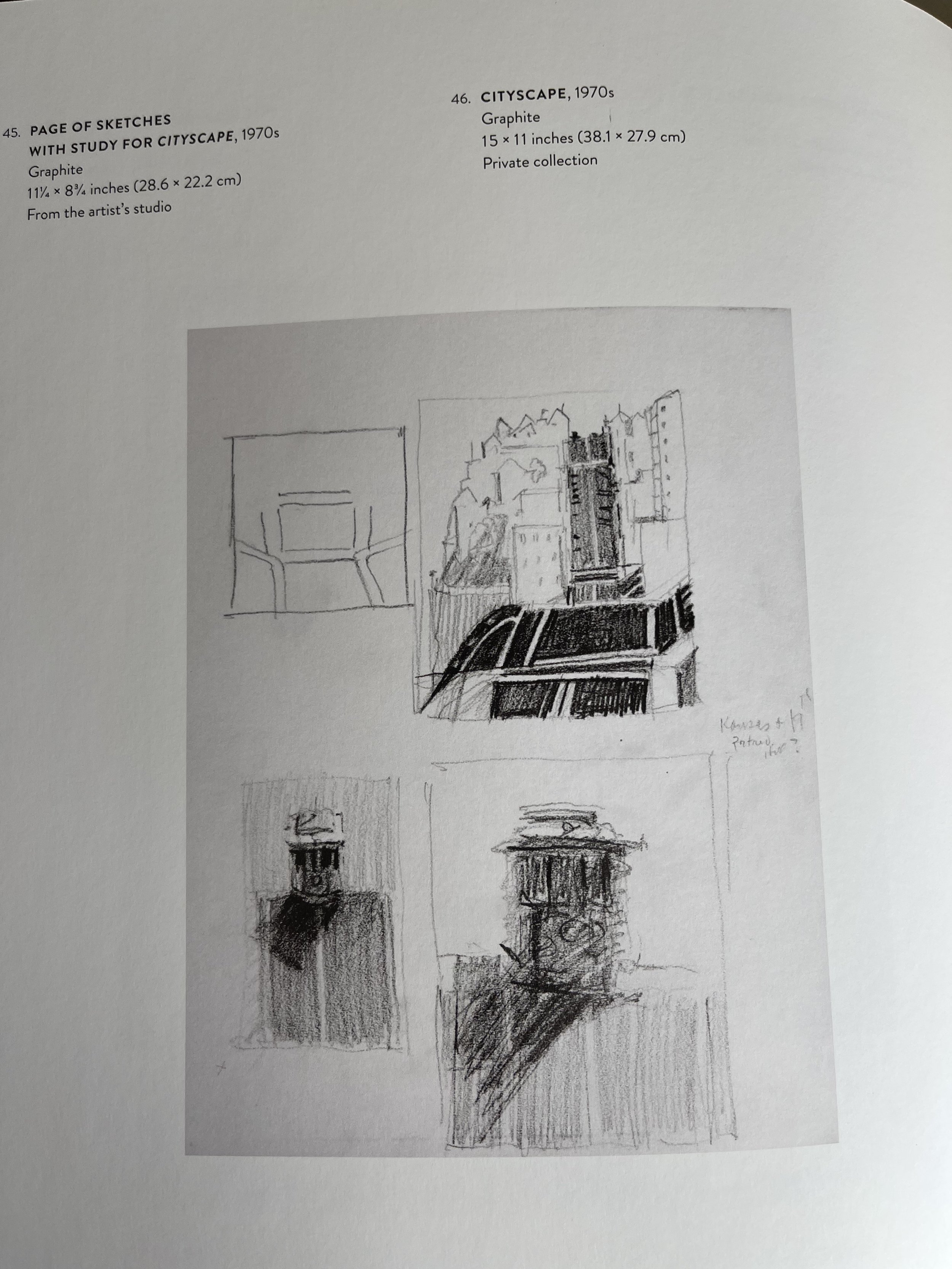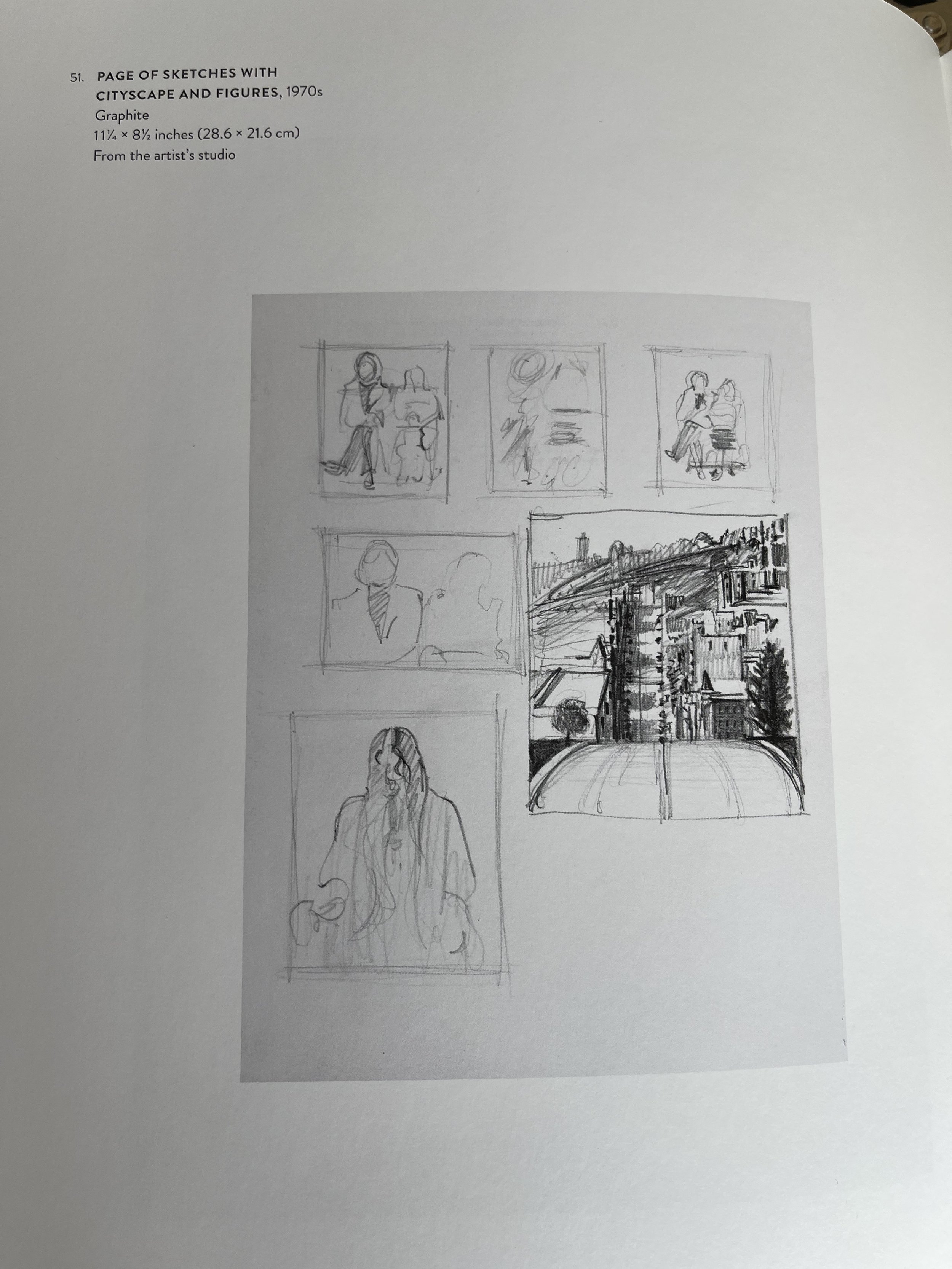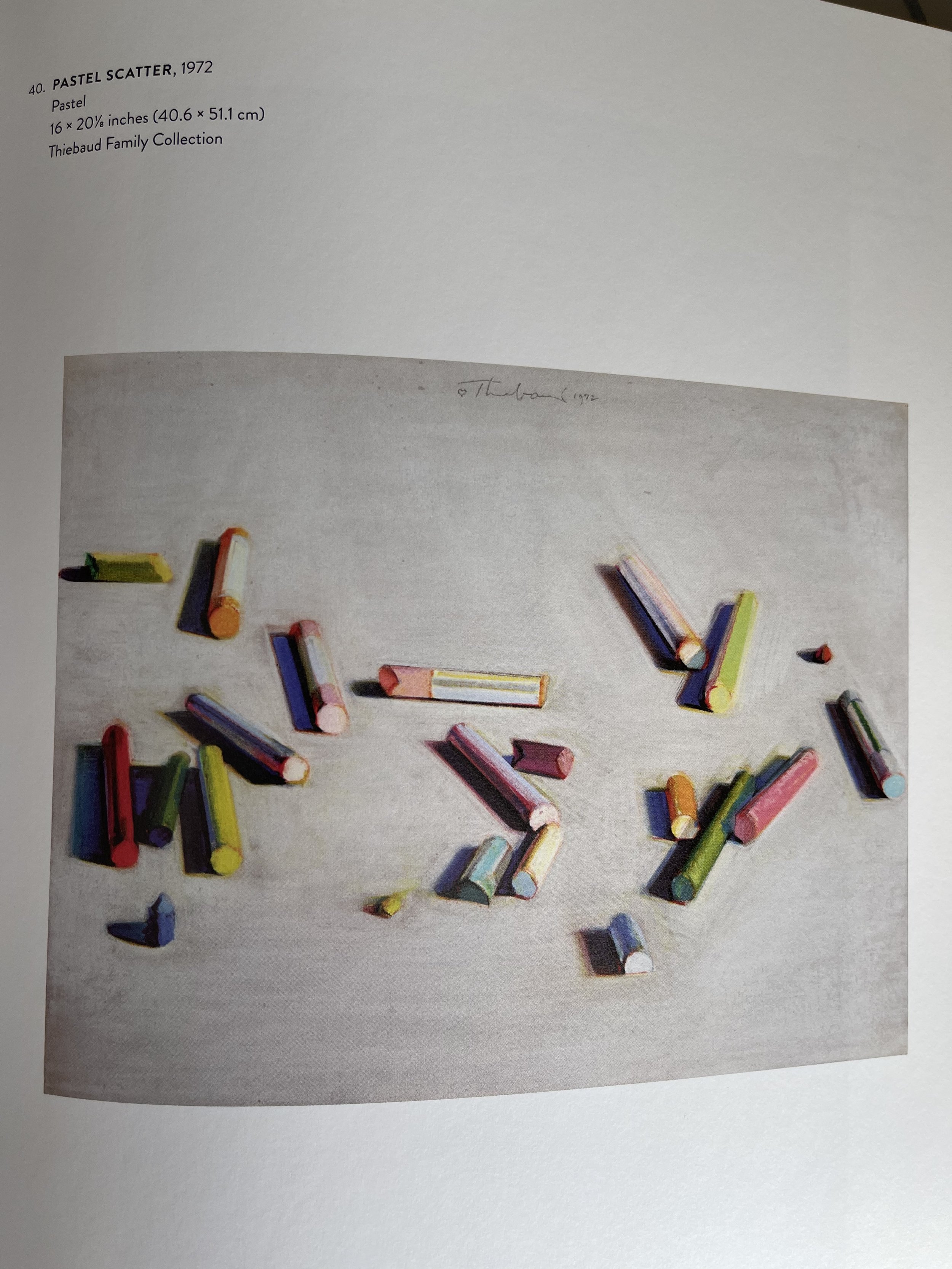Honoring Wayne Thiebaud
A few years ago San Francisco Museum of Art held an exhibit of the work of Wayne Thielbaud (pronounced Tee Bow). In addition to exhibiting his well known cakes and candies, steep city streets, and oddball landscapes, his lesser known process sketches were on display. This year on Christmas day Wayne Thielbaud died at age 101, and so it felt appropriate to kick off our blog and honor him as an inspiration for Urban Sketchers, as we often gain a lot of insight by studying what other artists have done. So what was his process? Everything pictured here is from the book Wayne Thiebaud: Draftsman, by Dervaux (Thames & Hudson).
Thiebaud used loose sheets of paper that he gathered in a leather binder or kept on a clipboard. This way he could change the kind of paper he used depending on what he was drawing with. He used pen and ink, pencil, pastel, watercolor, and even oil for these sketches, and his pages were standard and legal sized. Thiebaud used his drawings as a way of experimenting with composition, to make notations, and to study and explore ideas. Drawing and sketching were instrumental to his process of further art making. In his studies we see the thought processes behind, and the beginnings of his paintings. He liked using thumbnail sketches up and down these sheets of paper. From these thumbnails, he came up with ideas for paintings. “You decide what the parameters are going to be and then you try a series of shapes and patterns; then you try another one. You might make ten or fifteen of these, thinking, ‘Well, I’ll make the trees bigger here, something smaller here, change the patterns here.’ So you’re in a sense sort of probing and thinking, doing research on what might prove to be useful.” .
To him, drawing was the most important thing of all. It was a mixture of as “many feelings and visual memory awareness as possible.”
His influences included but were not limited to: Giorgio Morandi, poet of the ordinary, de Kooning, and Diebenkorn.
Finally, he relates advice he once received from de Kooning when he was wondering how to reignite his artistic muse, here paraphrased by Thiebaud:
You have to love something—it can be a brushstroke if you want it to be. You have to have something that you feel is real, that you live in. And then when you find that, you look at the best possible paintings from every historical period and kind of work.







